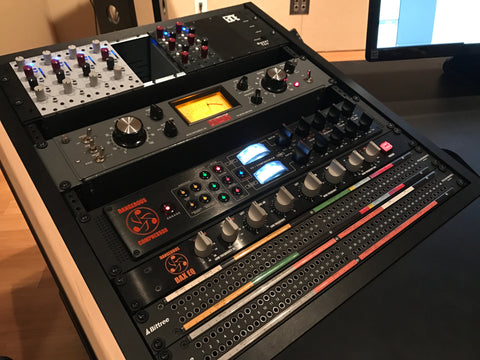Posted in Patchbays-explained
Have you ever wanted or needed patchbays explained to you? Do you wonder what exactly it is that patchbays do? If you are new to the world of pro audio or pro video or have recently encountered a need for such a device, today you will have your explanation!

A patchbay is a device that groups all of the inputs and outputs of the equipment in your studio into one convenient location and allow maximum flexibility in signal routing. Audio, video and control patchbays do basically the same thing but do so with the appropriate connectors, cable and terminations for each type of signal sent.
Video patchbays explained:
Video patchbays bring together video signals from the outputs of cameras, synchronization devices, signal generators and matrix routers up to a convenient location so you can route them how you see fit. These outputs are usually located on the patchbay in such a way that they will flow from a top row down to a bottom row, which is where the inputs are located. In many cases, it is desirable to have the output row on top and the input row on the bottom. Many patchbays are configured internally so that any output signal present on a top row will automatically flow into the input jack directly below it. This is the normal layout for a patchbay because it saves us from having to physically patch each bit of a signal path by hand. Utilizing the features of the hardware itself saves us from using all of our patch cables up too soon. Audio patchbays do the very same thing that video patchbays do but with some exceptions. With audio, you can route a signal to more than one place without degrading the signal much. With video, this is not possible without electronics to boost the signal before it is split. Video patchbays use either the Weco358 or mini Weco440 type connectors and patch cables.
Audio patchbays explained:
Audio patchbays are similar to video patchbays in that input and output signals are brought up to a convenient location. Top row output jack signals can automatically flow down to the bottom row input jacks internally. Those same signals can be isolated from each other as well. The main difference is in the difference between the types of electricity that constitute audio and video. While audio is robust and can flow through different types of conductors and physical connections on its path, video is much more sensitive and has several special requirements and therefore video cannot be connected to an audio patchbay. Balanced audio consists of electricity that is alternating current with a DC offset. That’s very technical sounding but basically what it means is that audio is not video and audio is not a control protocol. Audio is robust but it is its own format and has its own unique requirements. Audio patchbays come in several types including RCA, ¼” and TT. Most professionals use TT bays but occasionally use a ¼” or possibly an RCA patchbay for certain setups. The ¼” bay is most commonly found in project studios or non-professional setups.
Conclusion: Patchbays are a very helpful part of studio architecture. They bring all of your connections to a single convenient location and allow maximum flexibility.
Subscribe to our newsletter and always be the first to hear about what is happening.
© 2025 Bittree

Jack Field
Author